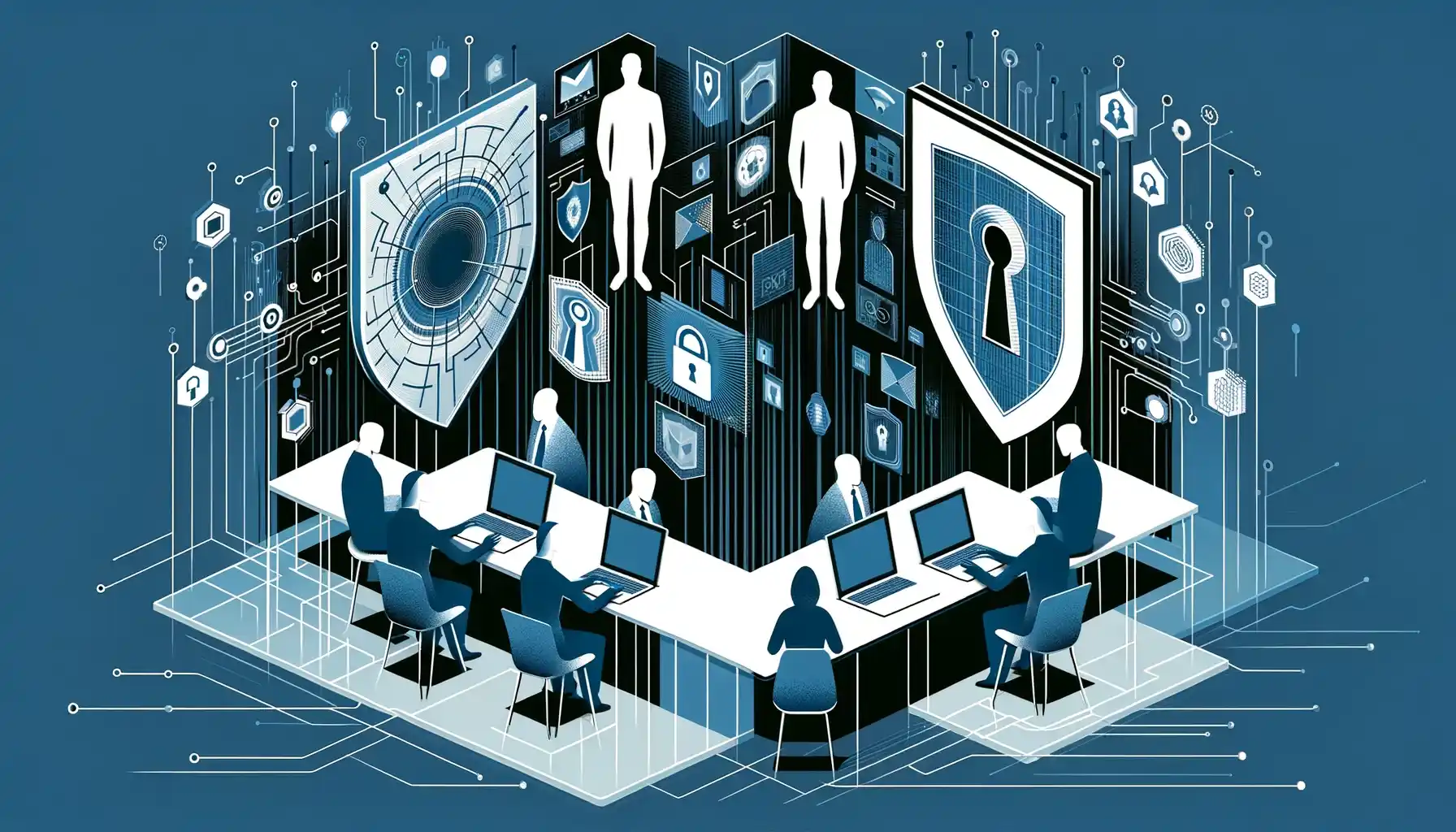CloudServus Announces Strategic Partnership with Recon InfoSec
We’re thrilled to announce a strategic partnership between CloudServus and Recon InfoSec, aimed at fortifying our commitment to providing...

In this blog we're going to explore innovative approaches for detecting insider threats within organizations and safeguarding sensitive data. In 2021 60% of cyber attacks where cause by insider threats. Insider incidents have increased by 47% over the last two years and have cost businesses approximately $871,000 per incident.
Insider threats refer to the risks posed to an organization's security by individuals within the organization who have authorized access to sensitive data or systems. These individuals may include employees, contractors, or even trusted partners. It is crucial for organizations to understand the various motivations behind insider threats in order to effectively detect and mitigate them.
One common motivation for insider threats is financial gain. Employees with access to financial systems or sensitive financial information may be tempted to exploit this access for personal gain. Other motivations may include revenge, dissatisfaction with the organization, or even unintentional actions due to negligence or lack of awareness.
To effectively detect insider threats, organizations need to have a comprehensive understanding of their systems, data, and employees. This includes monitoring user activity, analyzing access logs, and identifying any suspicious or abnormal behavior. By understanding the potential indicators of insider threats, organizations can proactively identify and address any potential risks before they escalate.
There are several common indicators that can help organizations identify potential insider threats. These indicators may include sudden changes in an employee's behavior, such as increased secrecy, unusual working hours, or unexplained wealth. Other indicators may include unauthorized access to sensitive data, frequent attempts to access restricted areas, or unusual patterns of data transfer or file access.
Additionally, organizations should pay attention to employees who exhibit signs of disgruntlement or dissatisfaction, as these individuals may be more likely to engage in malicious activities. It is also important to monitor employees who are going through significant life events, such as financial difficulties, divorce, or job loss, as these events can increase the likelihood of insider threats.
By being aware of these common indicators, organizations can proactively detect and respond to potential insider threats, thereby reducing the risk of data breaches and other security incidents.
Behavioral analytics is a powerful tool for detecting insider threats. By analyzing user behavior patterns and identifying anomalies, organizations can identify potential insider threats and take appropriate actions to mitigate the risks. Behavioral analytics involves collecting and analyzing large amounts of data, including user activity logs, access logs, and other relevant data sources.
Through behavioral analytics, organizations can establish baseline behavior profiles for employees and systems. Any deviations from these baseline profiles can be flagged as potential insider threats. For example, if an employee suddenly starts accessing sensitive data that is outside of their usual job responsibilities, it could indicate malicious intent or unauthorized access.
Implementing behavioral analytics requires advanced technology solutions and expertise in data analysis. Organizations can consider working with specialized vendors or investing in in-house capabilities to effectively implement behavioral analytics for insider threat detection.
Data Loss Prevention (DLP) solutions play a crucial role in insider threat detection and prevention. DLP solutions help organizations monitor and control the movement of sensitive data within and outside the organization. These solutions can detect and prevent unauthorized data transfers, identify sensitive data at risk, and enforce data protection policies.
By implementing DLP solutions, organizations can proactively prevent insider threats by controlling the access and movement of sensitive data. DLP solutions can also provide real-time alerts and notifications when suspicious activities are detected, allowing organizations to take immediate action.
Effective implementation of DLP solutions requires a thorough understanding of the organization's data landscape and potential vulnerabilities. Organizations need to identify their most critical data assets, establish data protection policies, and configure the DLP solution accordingly. Regular updates and monitoring of the DLP solution are also essential to ensure its effectiveness in detecting and preventing insider threats.
Insider threats can occur at any time, which is why continuous monitoring and response are essential for effective detection and mitigation. Organizations should have robust monitoring systems in place to capture and analyze real-time data on employee activities, system access, and data transfers.
Continuous monitoring allows organizations to detect any suspicious activities or deviations from normal behavior promptly. This can involve monitoring access logs, network traffic, and user behavior patterns. Real-time alerts and notifications can be set up to notify security teams when potential insider threats are detected.
In addition to continuous monitoring, organizations should also have well-defined incident response procedures in place. These procedures should outline the steps to be taken in the event of an insider threat incident, including containment, investigation, and remediation. It is important to have a dedicated incident response team that is trained and prepared to handle insider threats effectively.
By adopting a proactive approach through continuous monitoring and response, organizations can significantly reduce the impact of insider threats and protect their sensitive data and systems.
As we navigate the complexities of cybersecurity, understanding and implementing effective insider threat detection strategies becomes paramount. At CloudServus, our deep expertise in Identity & Security, coupled with our comprehensive Microsoft Security frameworks, positions us uniquely to aid organizations in fortifying their defenses.
Our approach, which integrates advanced threat detection with Microsoft Security Copilot and real-time protection with Microsoft Defender, is designed not just for compliance but for building long-term resilience.
Partnering with CloudServus means choosing a team committed to excellence and equipped with the industry's top consultants. Let us help you secure your organization's future, ensuring it's protected from the inside out. Visit our Identity & Security services page for more information on how we can assist you in transforming your insider threat detection and response strategies.

We’re thrilled to announce a strategic partnership between CloudServus and Recon InfoSec, aimed at fortifying our commitment to providing...
As cloud technologies become increasingly integral to business operations, the need for robust security in this domain has never been more pressing....

Recent events, such as the CrowdStrike outage in August 2024, have highlighted the critical importance of maintaining a robust business continuity...